Hvar Olive Oil Makes Triumphant Return From New York Competition
May 28, 2021 - Olive oil is a must on Croatian tables, but its impact and quality transcend borders. A great example is Hvar olive oil, which has made a triumphant return from an international competition in New York.
Turistickeprice.hr reports that Hvar olive oil again achieved great success at the prestigious New York International Olive Oil Competition. It is a continuation of the successful tradition of Hvar olive growers on the international scene.
Despite its impeccable natural beauty and rich history, the island of Hvar is often visited by tourists and recognized as one of the top destinations for summer vacations. However, a real small gastronomic scene takes place on the island of Hvar, and the most commonly used ingredient is certainly Hvar olive oil.
There are more than 200,000 olive trees on Hvar, and the latest awards from the world competition are an indicator of quality. Last year, Hvar olive growers from New York returned with three medals, and this year they were even more successful.
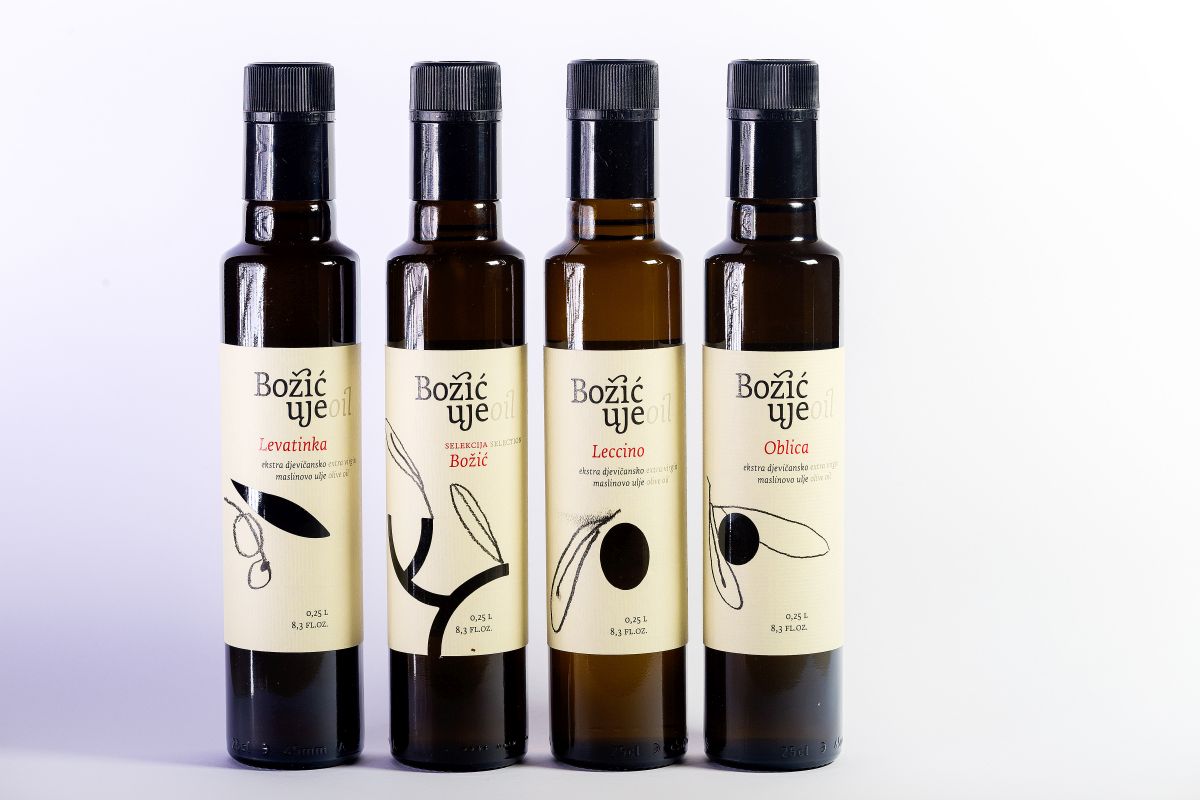
Christmas oil - Oil mill Božić-Svirče
Namely, out of 87 awarded samples from Croatia, as many as seven come from the island of Hvar, from five olive oil producers. Two gold medals went to the trade Zvir for olive oils Radojković Levantinka and Radojković Forms. One gold, for Oblica oil and a silver medal for the Christmas Selection, was awarded to Uljara Božić - Svirče d.o.o. Gold medals were also received by: OPG Čurin for oil Eva Marija, then OPG Magdalena Plenković for oil Atena, and OPG Makjanić Moškatelo for their MMuje.
Last year on the island of Hvar was extremely fruitful, not only with the amount of oil produced but also with very good quality, which this year was confirmed by the most prestigious competition in New York. The world competition for olive oil NYIOOC is the largest. The annual list of award winners is considered an authoritative guide to the best extra virgin olive oils of the year.
Dark green olive groves have been formed in this area since ancient times, and so far there have never been more, producing renowned oils with the highest recognition. The most common olive variety is oblica, with a representation of 85%, followed by lastovka, levatinka, and the somewhat newer varieties lećino and pandolino. More than 900 small and large producers talk about the tradition of nurturing olives for their products. It is therefore not surprising that every dish on the island of Hvar is sprinkled with this liquid gold.
When it comes to olive oil, Croatia is one of the leading countries in the industry. From Istria to Dalmatia, you can find all the information you need to know about the origins, processes, and where to buy Croatian olive oil on the Total Croatia page, now in your language!
For more news like this, follow our made in Croatia section.
To the Fields! Dalmatians Answer the Call of the Olive Harvest
November 2, 2020 - It is early November, and Dalmatians are answering the call, wherever they are - back to their roots for the olive harvest.
About ten years ago, I went to Zagreb to do a presentation to the board of directors of one of the big Koncar companies on the subject of compressed air leakage management (yes, really). The director was a man originally from Jelsa on Hvar, where I was living at the time, and in the small chat before the meeting started, there was inevitably a little discussion about life on the island.
It was late October, and he informed me that he would be returning to Jelsa the following week to take care of his fields, for this was the season of the olive harvest.
His colleagues teased him about his island ways, but there was a bond between us. Islanders in the big city, but ones who were quick to drop whatever they were doing in their posh city jobs when the call of the olives came around each year.
I saw the director on the main square in Jelsa the following week. His Zagreb suit had been swapped for Hvar olive harvest overalls. He smiled and waved.
The bond was strengthened.

It took me a long time to understand the cultural and psychological importance of the olive harvest to local people from my foreign viewpoint - years in fact. And yet now I feel sad that I am not answering the call of the olives this year, as I definitely feel it.
When I first became part of a Dalmatian family some 17 years ago, I really didn't get the obsession with olive oil. It was on EVERYTHING. As an uncultured Manchester boy, olive oil was not something that entered my dinner plate on a regular basis, and if I had consumed more than half a litre of olive oil during the 33 years of my life before Croatia, I would be surprised. But these guys put olive oil liberally on every meal.
As with most families on Hvar, my in-laws had their own olive grove, some 80 trees in all. In a good year, this was enough to produce over 200 litres of Dalmatian liquid gold - more than enough for the needs of the household, even with its liberal use. It didn't take long for me to get hooked on the Mediterranean Diet, especially with the delicious fare served up by my wife and punica, and olive oil was now an essential part of my life.
The only problem with having your own family olive oil...
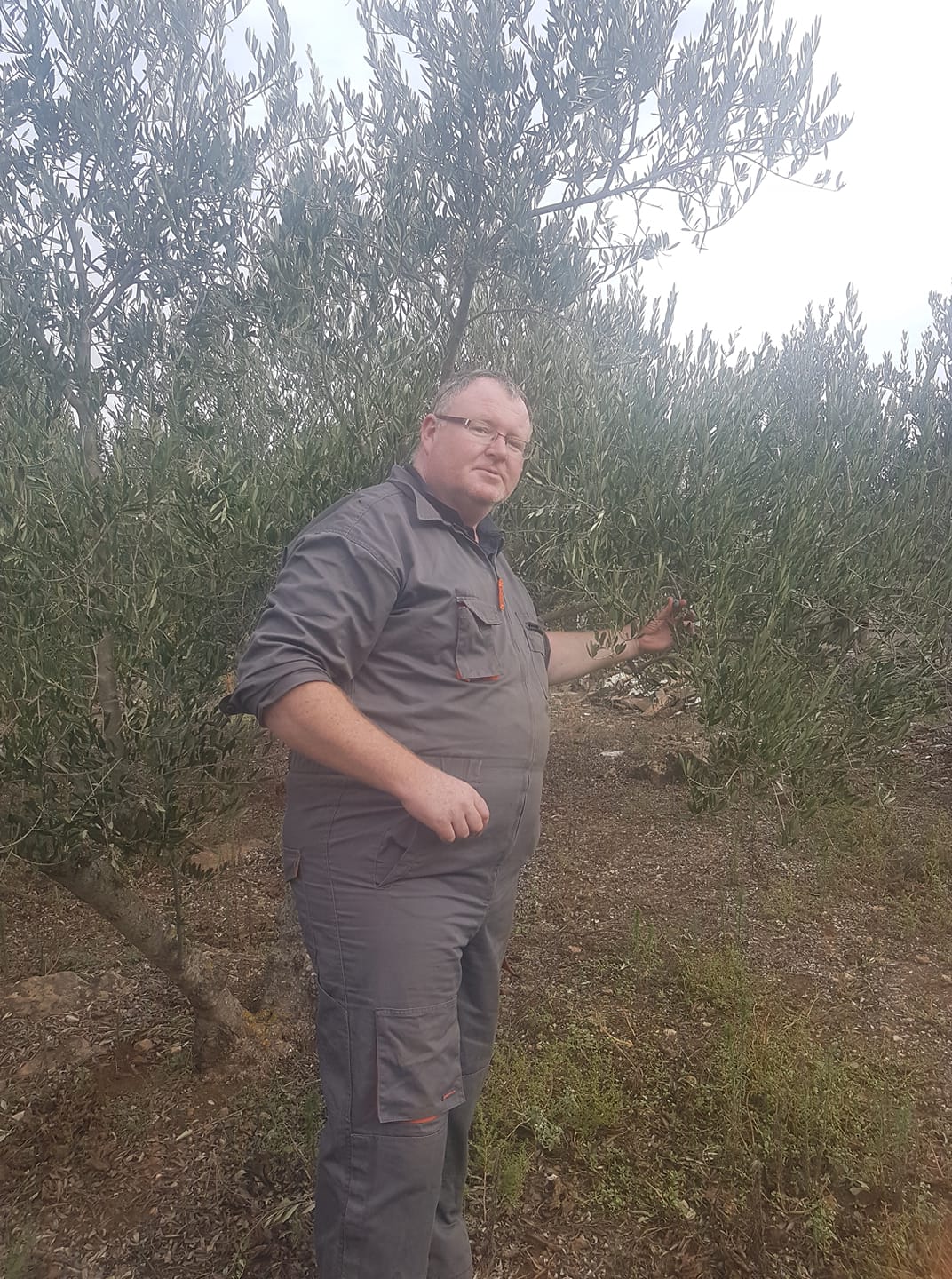
... is that someone has to pick the olives.
For years, I hated it, and I railed against the economics of it all. It would take X people to work Y days to come up with Z litres of oil. Add in the costs of the daily feast for the workers (of which more below), and surely it would be more economical to just buy the stuff from someone else.
The olive harvest was a major operation within the family, and one which I tried to avoid due to work for several years.
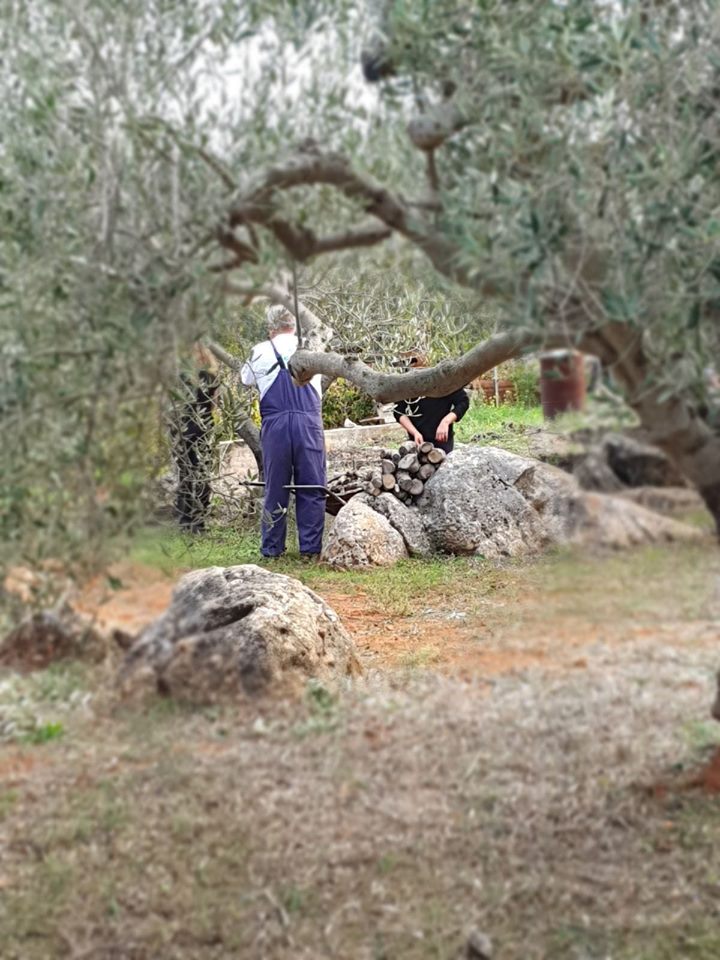
But I gradually began to understand that the olive harvest is far more than the oil produced at the end of the picking. It is an essential part of the Dalmatian way of life, and one which has changed little - if at all - in hundreds and even thousands of years.
No modern gadgets here, no time pressures, and nothing but relaxing nature, and the constant picking, picking, picking.
Extended family return to help out - either from the mainland or the island itself. Friendships that have been put on hold due to the busy tourist season are rekindled. It is an extremely social event.
If you want it to be. Or, if you was a complete detox from people and the pressures of modern life, choose a tree on your own in another part of the field. There is no hard and fast rule for olive picking - people do it at their own pace and in their own way.
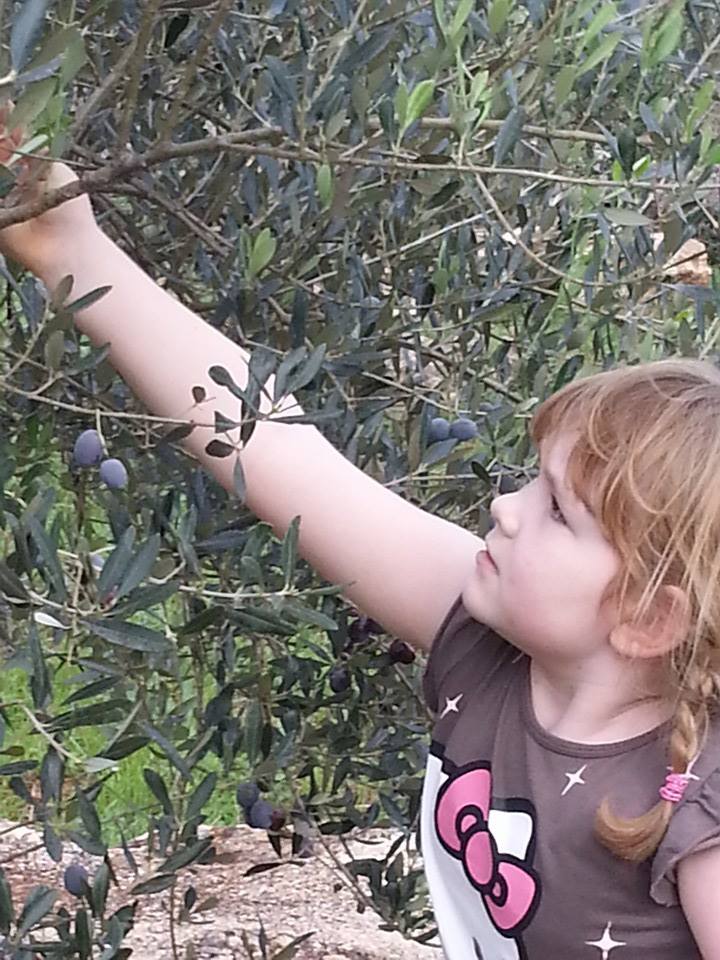
Growing up in Manchester, my connection with nature and the land was tenuous, and my fruit and vegetables grew in supermarkets. One of the things I loved about bringing up young children on a beautiful Dalmatian island was that early bond with nature. And nowhere was the bond stronger than helping out in Grandad's field...
The olive harvest is above all a family event which brings together different generations of the same family in a very relaxed setting.
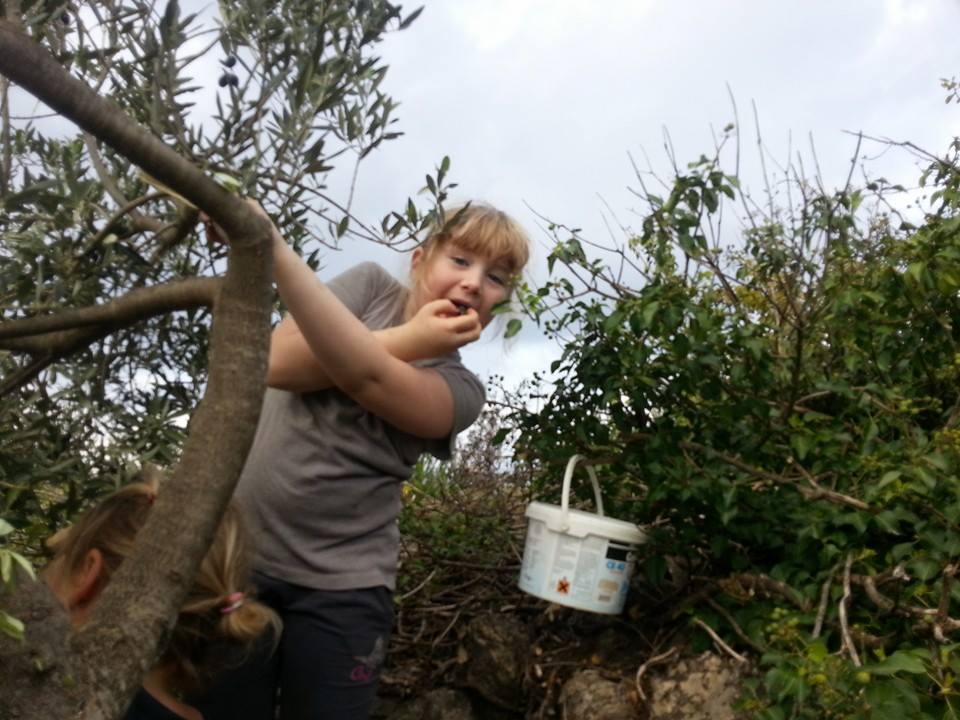
And there are plenty of opportunities for the little ones to play and explore while contributing to the olive harvest. Tree climbing is always fun, and the lighter and more nimble members of the team are always preferred to get to those harder-to-reach olives.
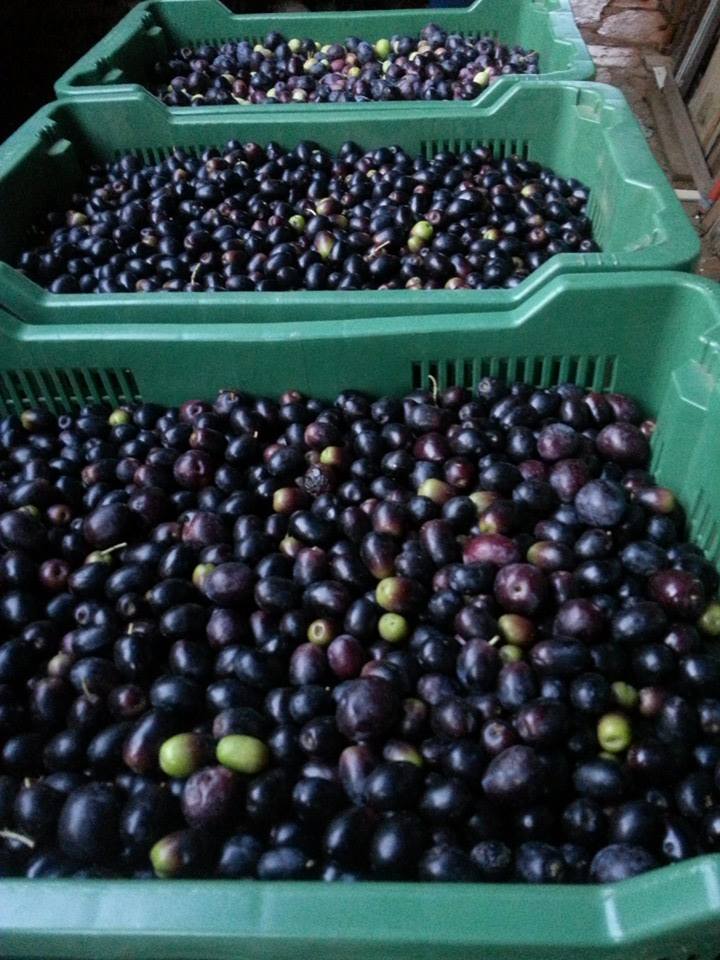
Depending on a number of factors, including the weather and number of pickers, the harvest for our family will take anything from three to eight days.
The precious olives are collected in containers.
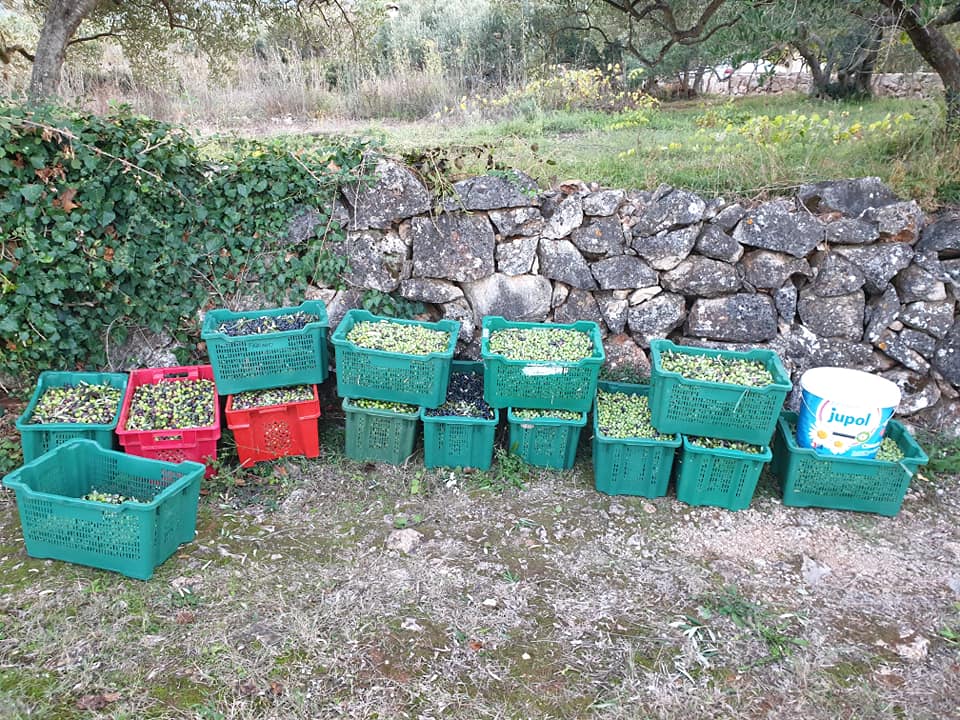
At the end of each day, they are taken off to the olive mill close by and pressed.
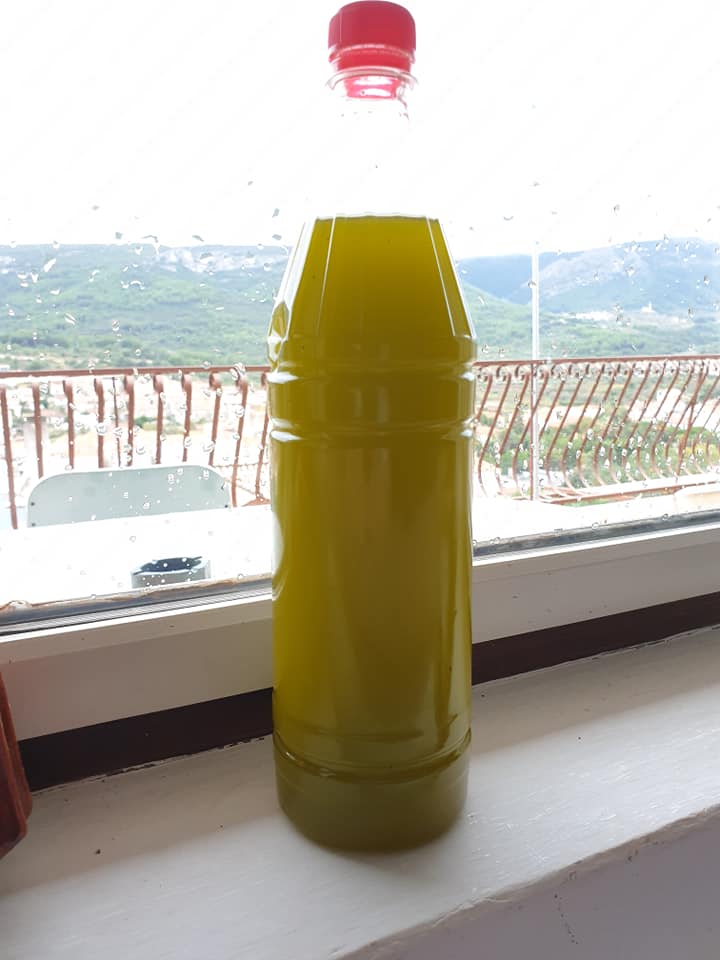
And one of the rewards for all the hard work will be several litres of this nectar, hopefully enough to service our annual needs back home in Varazdin.
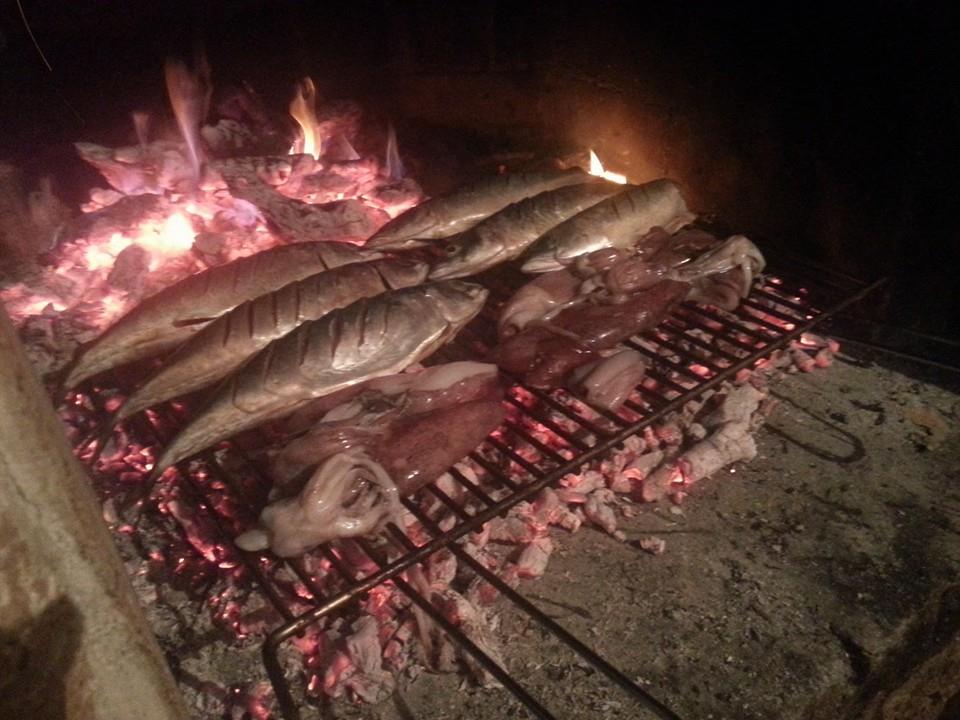
And one of the other rewards - and a definite highlight - is the daily grill for the workers in the cabin the field. Grilled meat or fish, salad from the field, the family rakija and wine, and plenty of the family olive oil of course.
Dalmatia at its very finest.
For the first time in several years, I will not be at the olive harvest this year. School and work commitments took care of that. I am a little sad, as I still feel the bond with my Koncar director, and I definitely feel the calling.
But then I started to smile inside, as I took my wife to Varazdin Bus Station for the early bus to Zagreb. There, she would meet her sister and older brother, who were both taking time off from their corporate jobs, and they would drive to the island together. Her other brother is already on the island, and the four siblings will be reunited with their parents but without the kids or spouses, for a few days in the field, some 25 years after finishing school and moving on with their lives.
I can't imagine a similar example of something like this in the UK, and I think it is brilliant. One more example, perhaps, of why the sense of community and family is so strong in Croatia.
Next year, I will be there.
For the latest travel info, bookmark our main travel info article, which is updated daily.
Read the Croatian Travel Update in your language - now available in 24 languages.
Join the Total Croatia Travel INFO Viber community.
World Olive Picking Championship to be Held on Brač
Postira, a small town and municipality on the island of Brač has been organising the unofficial World Olive Picking Championship for the past two years, and in 2019 the third edition of the prestigious competition will be held from the 10th to the 13th of October.
The aim of the event, organised by the Tourist Board and the Postira Agricultural Cooperative, is to promote the lifestyle linked to the olives, olive growing, picking, making olive oil and other connected activities. Last year the competition saw participants from 11 European countries: Slovenia, Hungary, Montenegro, The Netherlands, France, USA, Great Britain, Sweden, Bosnia and Herzegovina, Spain and local participants from Croatia (people from Postira and Dol, who are "playing" at home. The list of the participating countries obviously includes some Mediterranean countries, where the tradition in the production of olive oil goes back for centuries, but also there are non-Mediterranean coutries, with no tradition whatsoever.
In 2018 the hosts, Croatian team, won the competition with 67 kilograms of olives picked. The runners-up were the team from Montenegro, and the podium was completed by team Slovenia, to keep everything amongst the neighbors.
The rules of the competition state that the teams are made up of four members (two female and two male pickers), and there are several categories of olive picking in which the teams will face off: the traditional "na sakete" picking method (meaning "on the bags"), as well as the modern picking methods, using shakers and rakes. In addition to the competition itself, workshops, tastings (wine and other kinds!), tours and entertaining will be held.
The competition is one of the many things held on Brač each year after the very intense high-tourist season. After the succesful inaugural edition held last year, the Orienteering Club Maksimir will organize O-BrOČ, the Brač Orienteering Championship, a four-day event expected to bring several hundred nature-lovers and runners to Brač this year (hopefully, to a somewhat nicer weather than last year!)
First Croatian Olive Oil for Children - Brachia Kids
There's no denying that Croatian olive oil is second to none, and we're not the only ones who think it. Croatian produce has won award after award and the long coastal traditions of olive growing, picking and harvesting in Croatia are worthy of just as much praise as the final results of that hard work are.
As Morski writes on thr 4th of April, 2019, the respected Brač brand of olive oil, Brachia, has launched Brachia Kids, the first Croatian olive oil made just for children of kindergarten and elementary school age, reports Journal.hr.
''Brachia Kids brings the fresh and intriguing taste of organic olive cultivation from ecological [olive] growing from the island of Brač. These flavours are ideal for children when it comes to falling in love with the taste of olive oil. This new product is intended for parents who understand the healing properties and the great nutritional value(s) of olive oil, and who want to introduce it to their children's diet,'' said Leopold Botteri, the co-manager of the Brachia cooperative.
Part of the main role in popularising the consumption of olive oil for children will also be played by its attractive packaging, which has been made by Izvorka Jurić and Jurica Kos.
''We've designed the packaging so that the product is attractive to children, fun to use, and also educational, in order to develop their awareness of the importance of the regular use of olive oil. The body of a glass vial (0.25 dcl) has been partially placed in a box that, together with the black tip of the bottle, forms a crayon, and within which six crayons are actually housed. Following the dissolution of the box, there is a fun colouring book with illustrations of olive trees and leaves and various tasks for children to complete. Olive oil nourishes the body, and the puzzle and colouring on the packaging, acts as food for the brain. Together, they make a complete product for the healthy development of children,'' explained packaging designer Izvorka Jurić.
In addition to the premium olive oil of Brachia Maslina and the latest Brachia Kids product - Izvorka Jurić has designed products for the lines of Brachia sort oils, ecoBrachia and Brachia & Friends. All of these products, including Brachia Kids' olive oil for children, are now available for purchase in UJE stores across the Republic of Croatia.
Make sure to follow our dedicated Made in Croatia page for much more.
Cres and Susak Show Why Sheep and Olives Work Well Together
As is the case with many Mediterranean countries, the relationship between olives and the Croatian coast runs deep, it is a story that would take all the time in the world to tell and it boasts a plethora of different personal meanings for many individuals and their families.
Olives and the coast go hand in hand and the entire practice of olive picking has well and truly withstood the test of time and the various winds of change that time has brought with it over the many centuries that have passed. Skills and knowledge are passed down through generations, and traditions are upheld through time.
Despite the modern world in which we're increasingly being dragged feet first into, many families along the Croatian coast, from the extreme south of Dalmatia to the Kvarner region, bring things to a standstill when ''olive time'' comes along. During that special time of year, families are bonded again and again through the picking of the olives, and the work that follows.
As Morski writes on the 22nd of March, 2019, the northern Adriatic islands of Cres and Susak were presented at the fourth International Congress on the revitalisation of terraced landscapes in the Canaries.
Dr. Goran Andlar from the Faculty of Agriculture in Zagreb and Tanja Kremenić from Cres who is currently doing her PhD in Padua discussed the terraced landscape of the Croatian island of Cres, which embodies a kind of olive and sheep cooperation, writes the portal Otoci.net.
''The olive-sheep model was a very interesting component of the presentation to the public, and we take it for granted, it's natural to us. Sheep are natural fertilisers, they're natural cleansers of excess vegetation and they're bred extensively so they does not represent any sort of big extra effort for humans. Why is it so important that we preserve terraced landscapes?
If they're not used, there is a risk of erosion and a loss of fertile anthropogenic soil. They are also very important today because they represent an alternative to mechanised high-intensive agriculture and are an example of the implementation of pertinent concepts of development such as "sustainable development" or the "circular economy" in reality, but here on the ground,'' stated Tanja Kremenić.
At one congress back in 2016, which was held in Padua, the beautiful island of Cres presented this charming sheep-inspired theme with a poster, and then a one-day trip to the island of Cres was organised for the participants of the congress.
Give our dedicated lifestyle page a follow for much more.
Extra Virgin Olive Oil; Knowing the Difference
December 15, 2018 — Over the past decades, it's been estimated that close to 90% of all olive oils we find on the shelves of our favorite supermarkets are not even close to the essence of health that olive oil is considered to be. So how are we supposed to know the difference?
For millennia, people have been growing, picking and processing olives into what's forever been praised as pure, liquid green gold — the extra virgin olive oil. Unfortunately, for almost as many thousands of years, from ancient times to the present, people have also been adulterating this precious oil, blending it with different lower-grade, less nutritious, poor quality oils. Given today's sophisticated technology, adding color and flavor to these chemically enhanced blended oils, and selling them labeled as "extra virgin" becomes even easier.
Basically, extra virgin olive oil is fresh-pressed olive juice made without heat or chemicals. Good EVOO must have three parameters; it has to be fruity, spicy, and bitter.
To really understand it and be able to tell the difference between genuine EVOO and other olive oils of lesser quality, a conscious consumer must learn how to read the labels.
Olive oil is graded by its level of acidity which is an indicator of decomposition; meaning, the amount of free oleic acid indicates the extent to which fat has broken down into fatty acids. Only unrefined olive oils of the highest quality and an acidity level of no more than 0.8% will be labeled as "extra virgin," the highest grade possible.
The "virgin" label means we are looking at an olive oil of lesser quality, with a free acidity of up to 1.5% and even though they still taste good, often these oils will have noticeable flavor defects, even if only slightly present.
Lastly, olive oil that comes from bad fruits or careless processing is called "lampante," the inedible oil of the worst quality. Apart from its high acidity levels and an unpleasant flavor, without further refining, this oil is not fit for any kind of consumption. In fact, the name lampante comes from its traditional use in oil-fueled lamps.
Having a quite strong, pungent taste and aroma, real EVOO is not always smooth on the palate. However, the pronounced bitterness and a burning, peppery sensation it creates in the mouth are actually both signs of quality, indicating high levels of polyphenols which carry the numerous health benefits associated with the olive oil. Generally, EVOO's flavor will basically depend on the terroir and olive variety, but also the time of harvest.
Another important thing to pay attention to is the best-before date. As a rule of thumb, an unopened olive oil should be good for about two years from the time it was bottled. However, the date of harvest is actually a much better indicator of freshness, as it tells you exactly when the olives have been milled and the oil pressed.
Even though EVOO is a supremely healthy food, it is known to be highly perishable. Since light, heat, and air drastically affect its stability, we need to make sure it is properly stored — at room temperature and away from the sunlight. Also, once we open a sealed bottle of olive oil, it is recommended to use it within no more than six months.
If not used in time, even the finest oil will eventually go rancid. So once we've mastered the labels, it's time to rely on our senses. Rancidness is basically fat gone bad, and it has an unpleasant smell of staleness, often described as the smell of old nuts or even crayons, and if you're not sure about the smell, tasting rancid oil will leave you with a repugnant, greasy mouthfeel.
The three other most common olive oil defects are fustiness, caused by the non-oxygen fermentation of olives before they are milled; the strong winey smell of oxygen-fermented olives, reminiscent of vinegar; and the mustiness caused by moldy olives.
In conclusion, if olive oil doesn't exude a delightful aroma of fresh green or ripe olives, and doesn't taste fruity and spicy with a pronounced note of bitterness, chances are you've got a case of a good oil gone bad.
If you want to know more, check out the OOT, and for more related content here on TCN, make sure to follow our dedicated page.
Olive Oil Rejuvenates A Croatian Village, One Month A Year
“E, i?”
That’s how the day starts at about 4 p.m. Or better put, how the day starts to end. With a “Yeah, and?”
“I picked about maybe about 70 kilos. And it's hot,” I replied, throwing myself onto a barstool and exhaling. “I shouldn’t, for the love of God, be wearing short sleeves.”
Not in mid-November. Not during the olive harvest.
Scattered around the bar are familiar faces. There’s a cousin... No, not a cousin. Just a friend’s father. Might as well be a cousin.
You’ve got the carpenter who seems to have had a mustache his whole life, and his lanky brother, a mechanic who hasn’t met a day without shaving first. There's that chainsmoker with the salt-and-pepper hair that swoops back over his bald spot and curls up back behind his ears. He left decades ago but comes back every November for the harvest.
Then there's the stumpy, bald guy with the lopsided eyeglasses… Well, he’s always here.
These folks, they all speak this village’s variant of “čakavski”. They can tell you which house they were born in — it inevitably isn’t the same one they were raised in. They all laugh at each other’s faults, yet burst into rage-filled arguments at the slightest provocation.
They all hail from Mali Iž.
No zimmer frei seeking a liqeur not on the shelf. No members of the Canadian or Aussie diaspora in Ray Ban sunglasses puncuating their conversations with English exclamations (mostly “faken”).
And so it goes, every year when the olives switch from shiny green orbs to blotchy purple droops, a vast collective of Mali Iž’s local diaspora descend onto this island, coming “home” if only for a few weeks. Folks who left long ago for brighter prospects and bountiful opportunities. For bigger dreams and better odds.
They left, frankly, because they didn’t want to spend a lifetime doing this; depending on the whims of a tree which produces fruit whenever the hell it feels like.
The irony isn’t lost on the mass of Malo Ižani flooding the island to pick olives. They know they’ve come back to do the thing they tried to escape.
In the process, they accidentally show what the island could have been if they stayed. Vibrant, alive, unique. To borrow a phrase: Iž, Full of life.
Because on Iž and a few other Dalmatian islands like it, olives weren’t a happy hobby, or one of a myriad of economic sectors. It wasn’t a fad.
Olives were a means of survival.
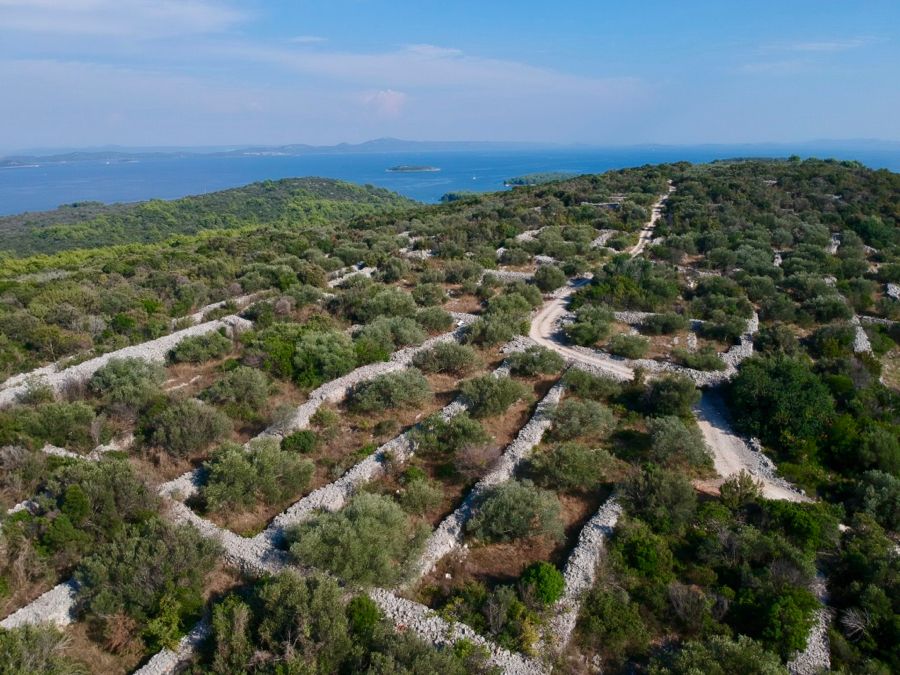
When the first settlers arrived on this island about 1,000 years ago, they were greeted by a heap of limestone and dolomite ridges, covered in aggressive weeds which survived despite lackluster soil and arid conditions.
It was not screaming out for an agricultural boom. Yet the island’s owners — Zadar’s aristocracy and the Church — wanted some return on investment from their island holdings, while safely tucked away in their mainland villas. Their needs were met by some willing and needy economic dregs seeking something to keep them alive.
Those early settlers — my ancestors — broke open the hard rocky shell of this island quite literally by hand, until they found soil worth propagating. They tilled, dug, fertilized and planted olives.
The same olives I’ve spent the better part of five years rejuvenating. The same olives which, yesterday, gave me this…
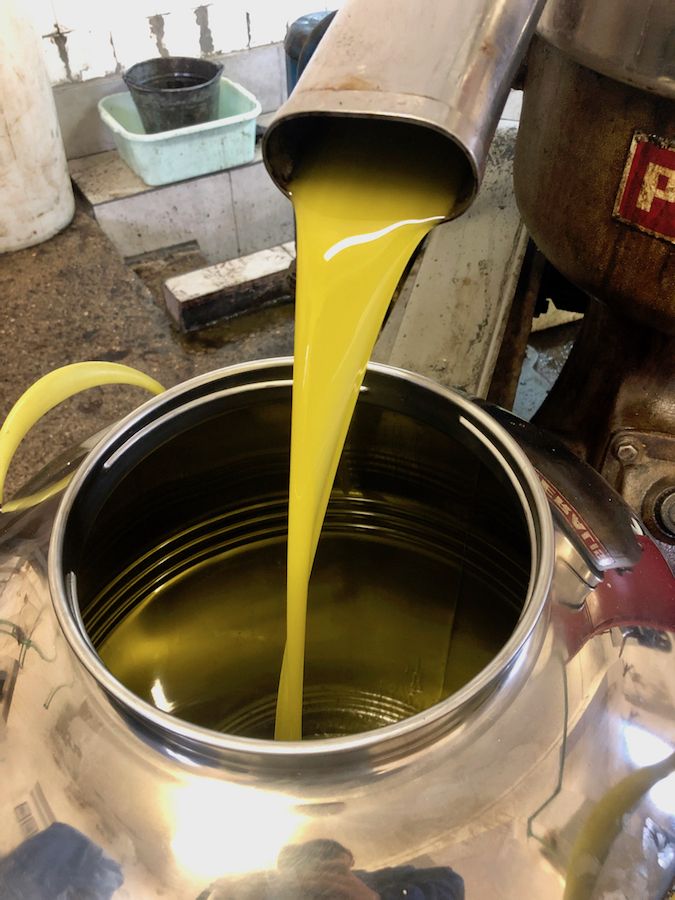
Hazards And Hope At The Mill
“I tried Viagra. Doesn’t work for me.”
This is how my day at the mill begins — or starts to begin. Our town “mechanic” is laying bare the trials and tribulations of life as a 30-something transplant who moved to this island from Zagreb. He’s black and brown with the grease of mashed up olives, his hands and face shiny like a newly-minted coin.
“Yeah, I already heard this one” I tell him, yet he continues, “Viagra only makes me hungry!”
Inside the mill, the grindstones are whirring over freshly-dumped olives, which pop and smack as they’re crushed. The soft, lilting smell of freshly-pressed olives stands stout in the air, as immovable as the hydraulic press which produces it.
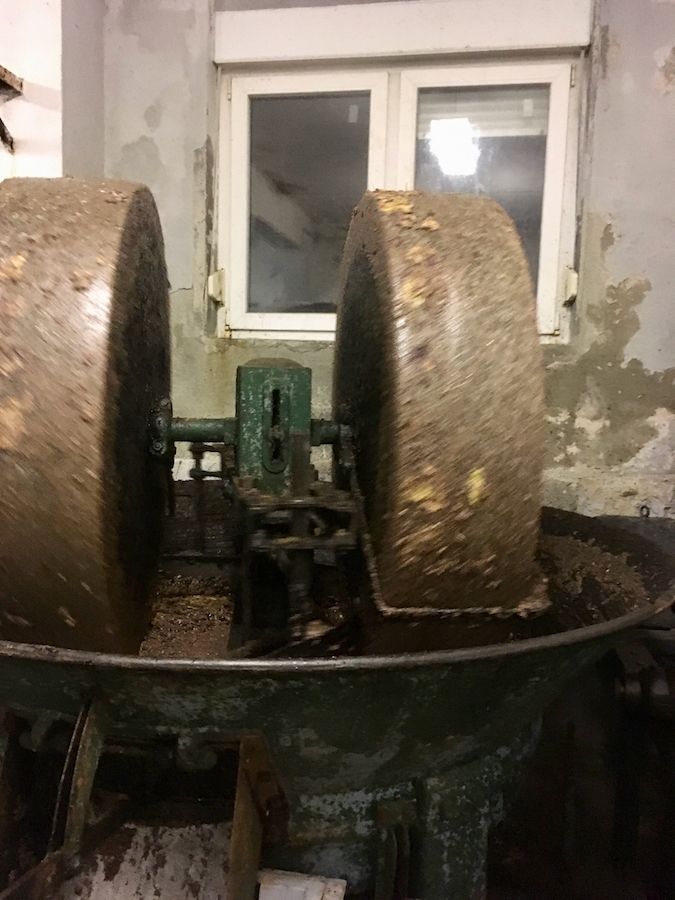
Then there’s the “separator,” a barrel-shaped device which whirls the freshly-pressed oil to remove any last bits of water and solids, then spits it out of a tongue-like tube.
It represents the terminus of an annual olive journey that starts with fertilizer and ends with a gas-powered trimmer. Rituals of all sorts are peppered along the way: grilling food while burning pruned branches; the backaches felt after digging fertilizer into the soil with a crooked spade known locally as a motika; age-old arguments over pruning techniques and modern vs. traditional agronomy.
Then, on your day at the mill, it’s customary to bring the workers some form of sustenance, booze and deserts.
And perhaps entertain the odd erectile function story out of sheer good will.
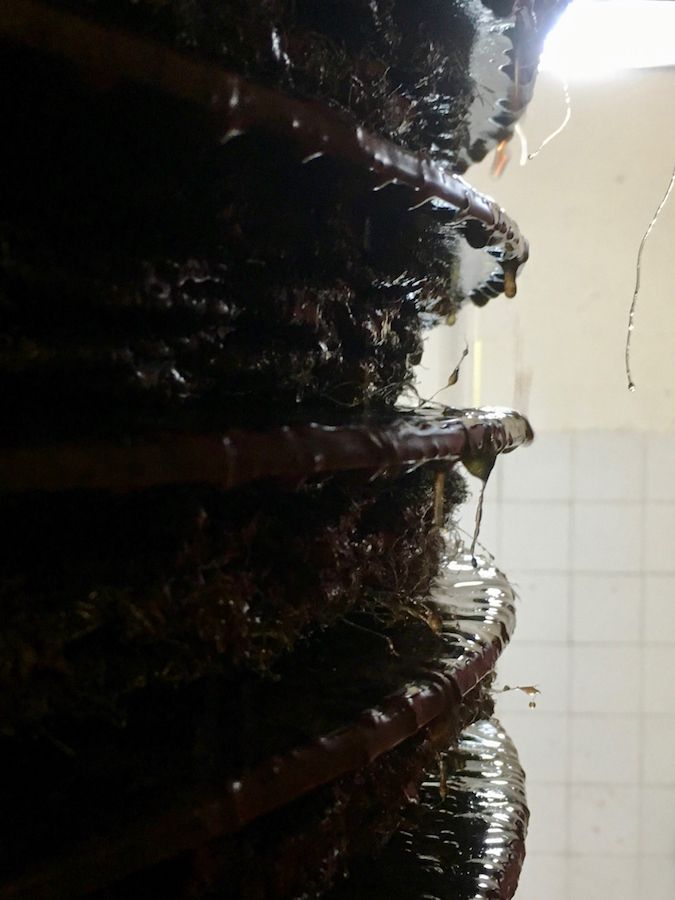
Find someone old enough on Iž and they’ll tell of a life completely consumed by the soil and sea. Grapes, figs, pomegranates, plums, and the occasional almond tree, accompanied the usual vegetable gardens and potato fields. And perhaps in particularly fruitful (read: profitable) years, cured meats.
Yet at the heart of it all was the olive — a source of food, light and heat. It was also, for many, equal to any currency. (It certainly outlasted quite a few.)
Iško ulje could get you cheese from Pag, wine from Zadar and a handyman to repair something around the house, all in a shadowy barter economy that still exists if you make the right offer.
Now though, Iž's oil is mostly the domain of hobbyists and romantic nostalgics looking for a brief dose of their past lives.
More than any other summer vacation, or one-off family gathering, olive season brings out the final vestiges of what was once a thriving micro-culture. One has to wonder: why can’t olives bring it back again permanently?
To read more about olive picking in Croatia, click here.
Ugljan Celebrates Wonders of Olive Oil
The island of Ugljan shows some love to an enormous part of Dalmatia's rich herigate - olive oil.
Price of Olive Oil, Fruit and Vegetables Rises, Wine Cheapens
As some prices rise, others fall.
Eva Marija Čurin Champion of Hvar Olive Oil
The young olive grower cultivating four hectares of land is overjoyed with the success


